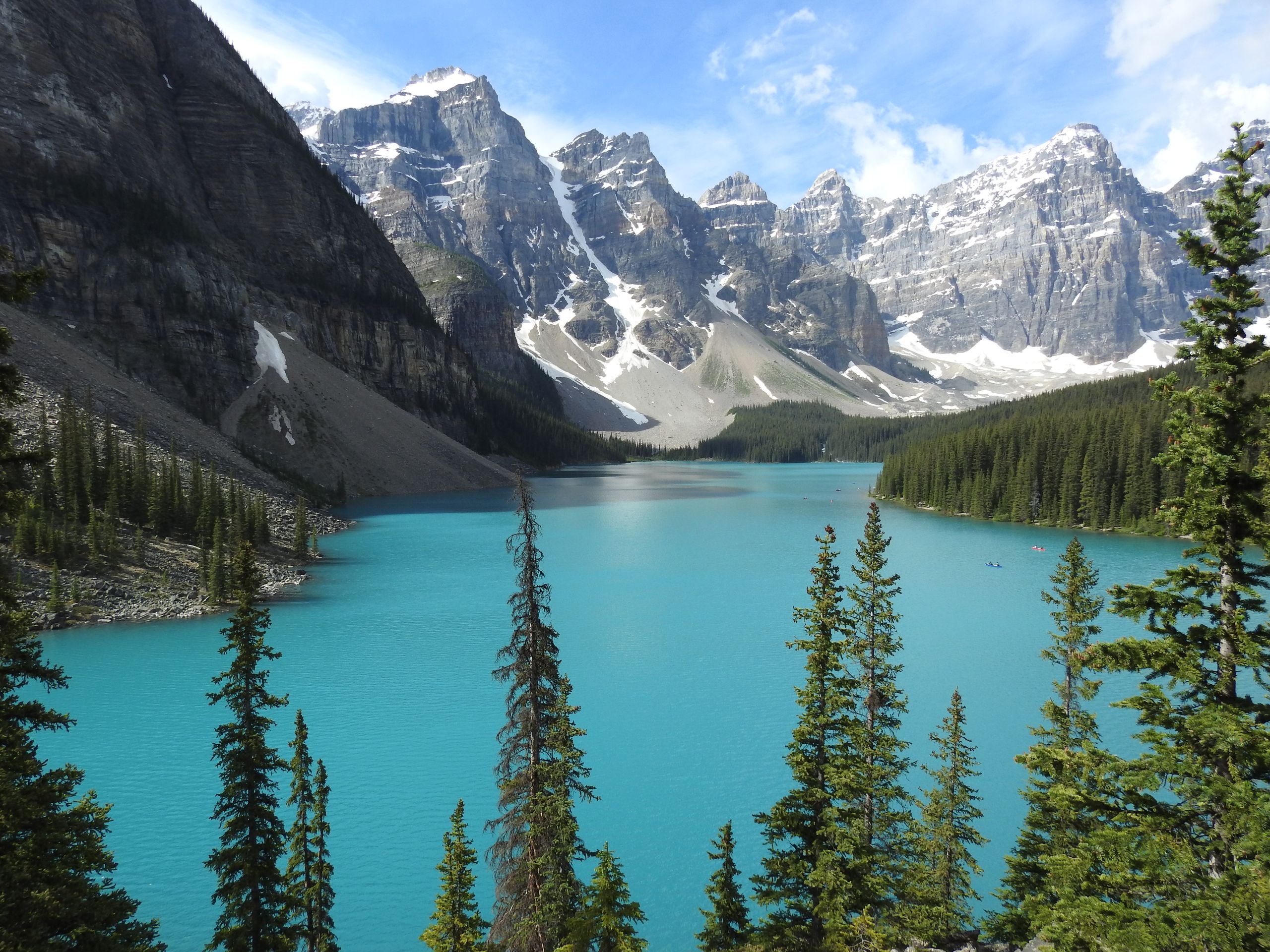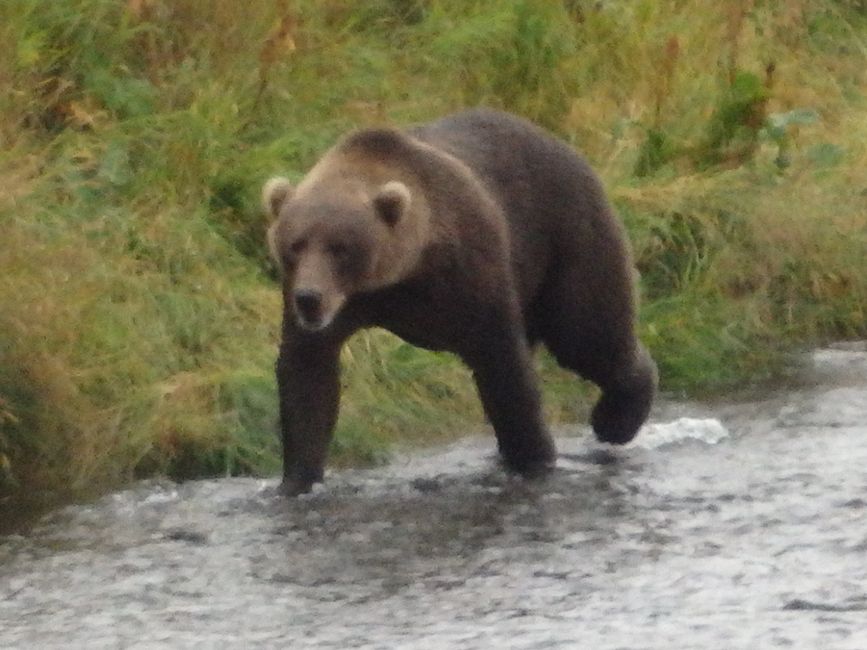BLOG 18 - Alaska im Regen / Rainy Alaska
Veröffentlicht: 24.08.2022
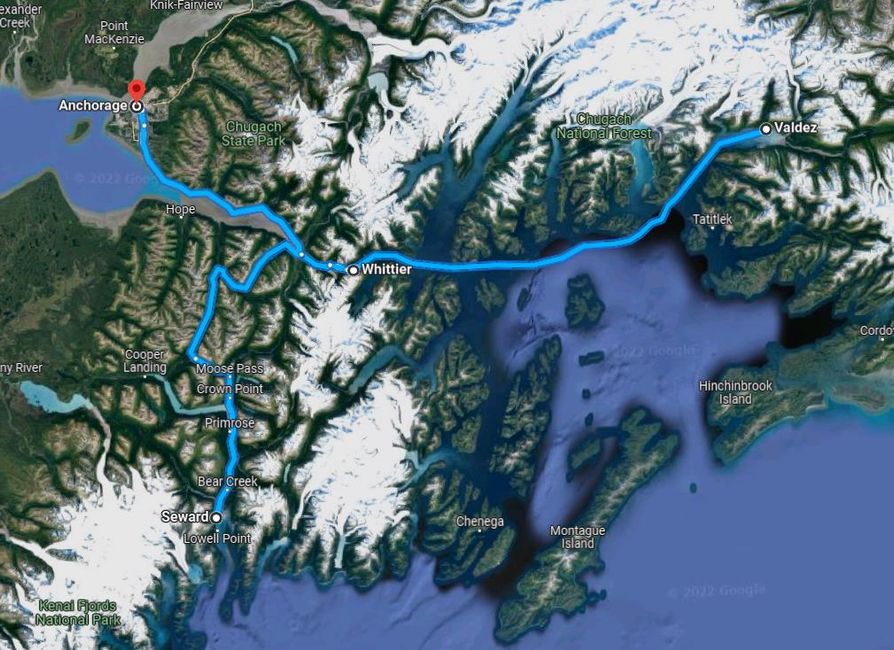
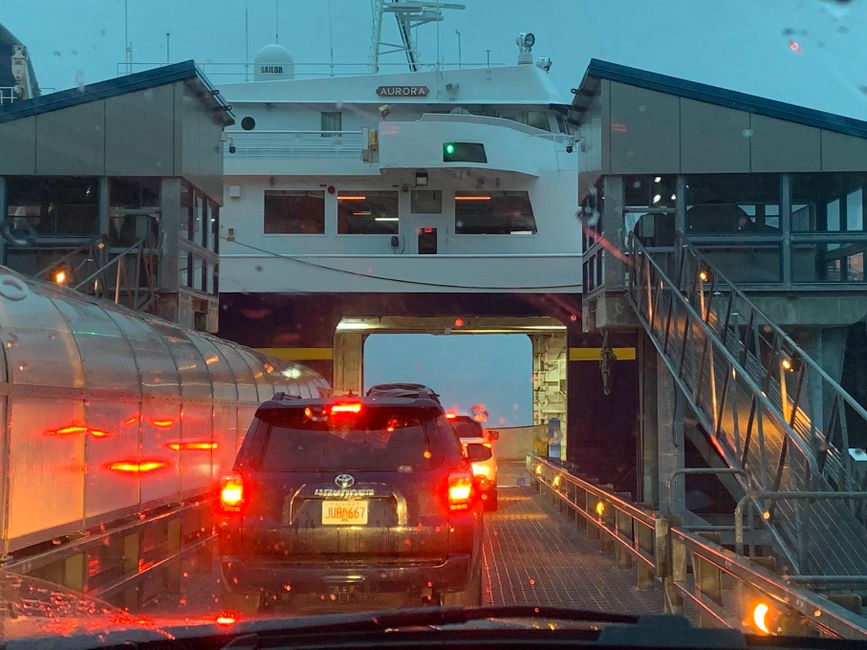
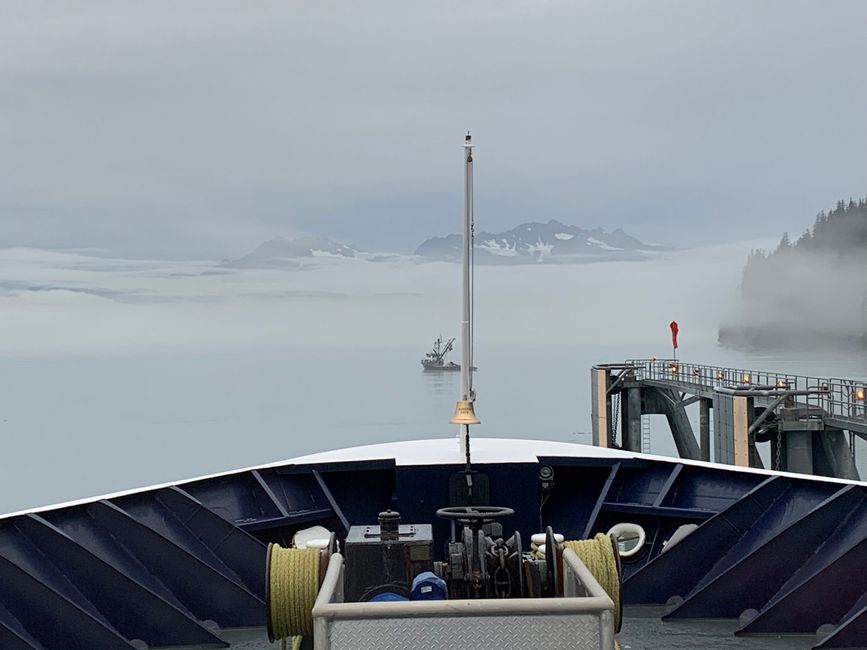
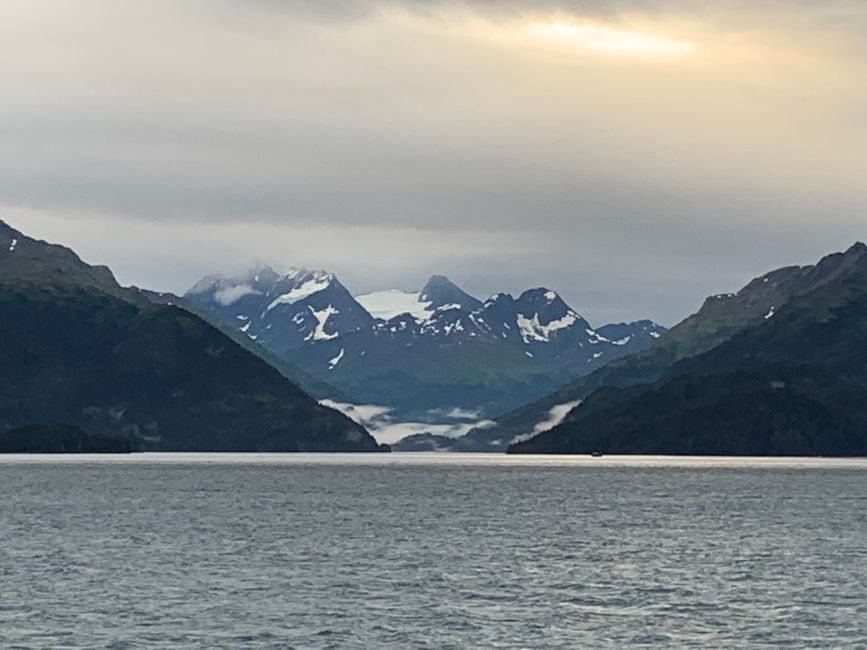
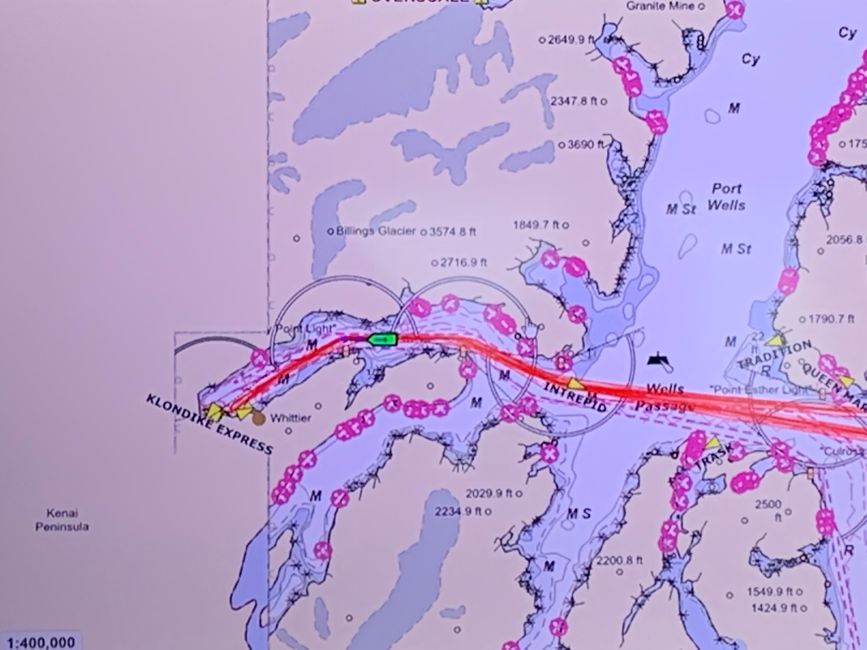
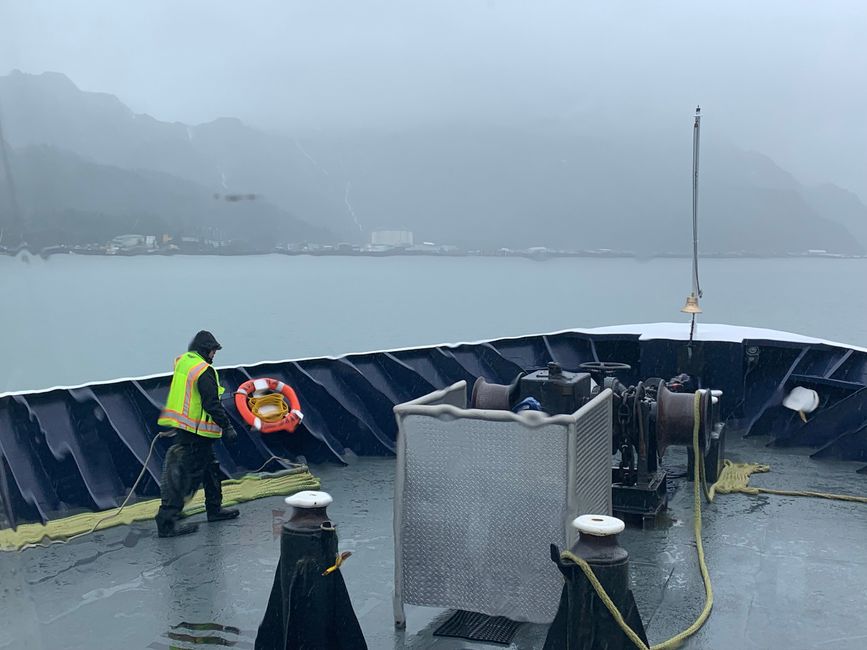
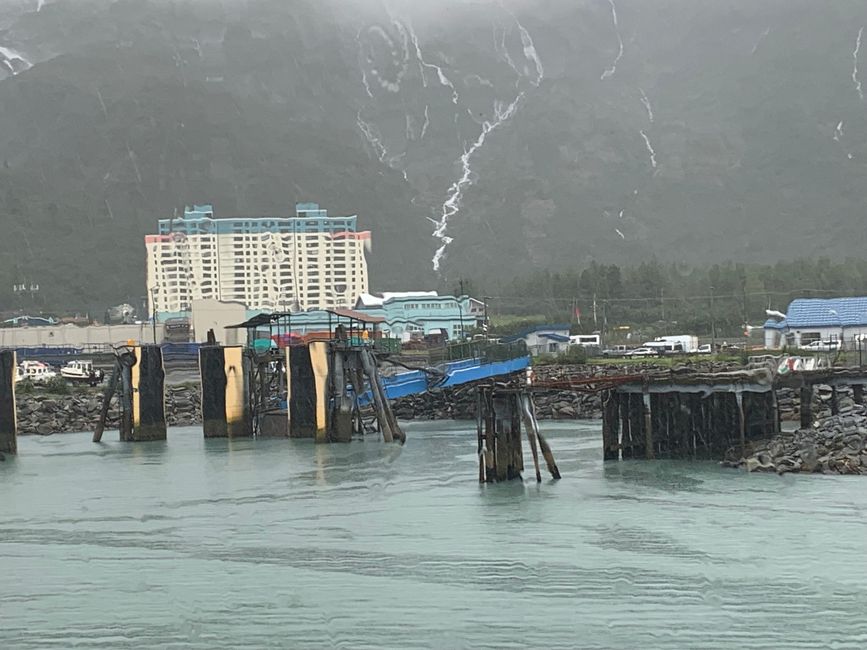
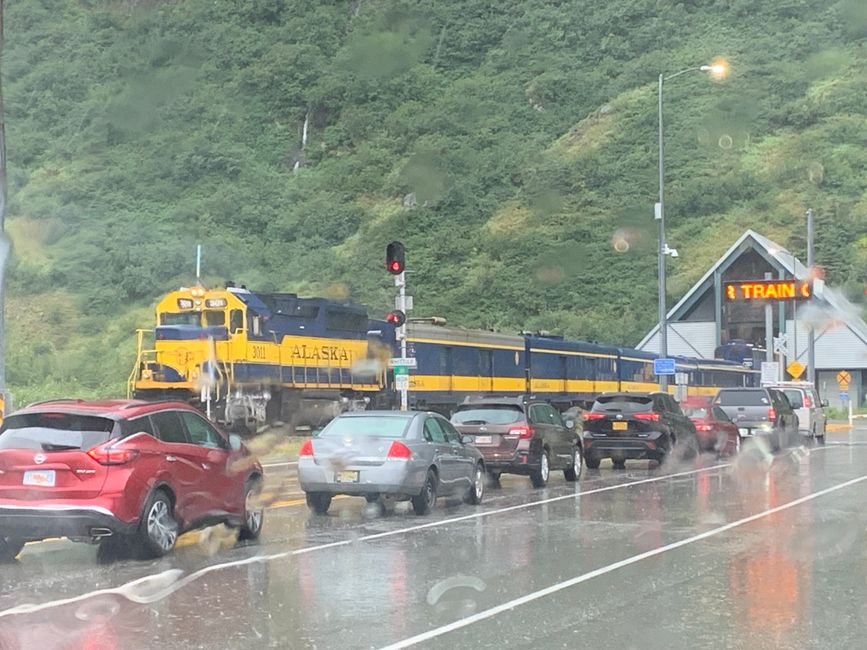
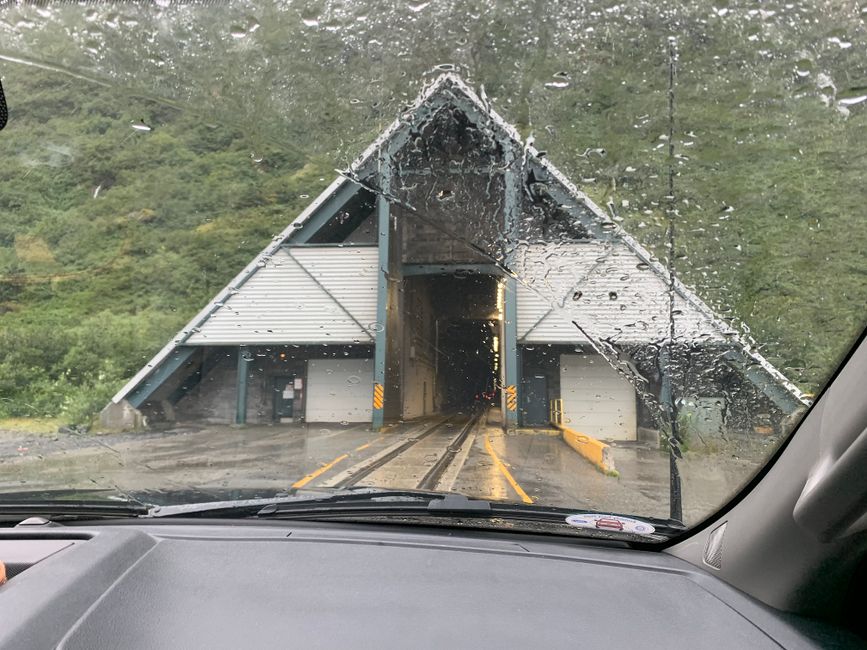
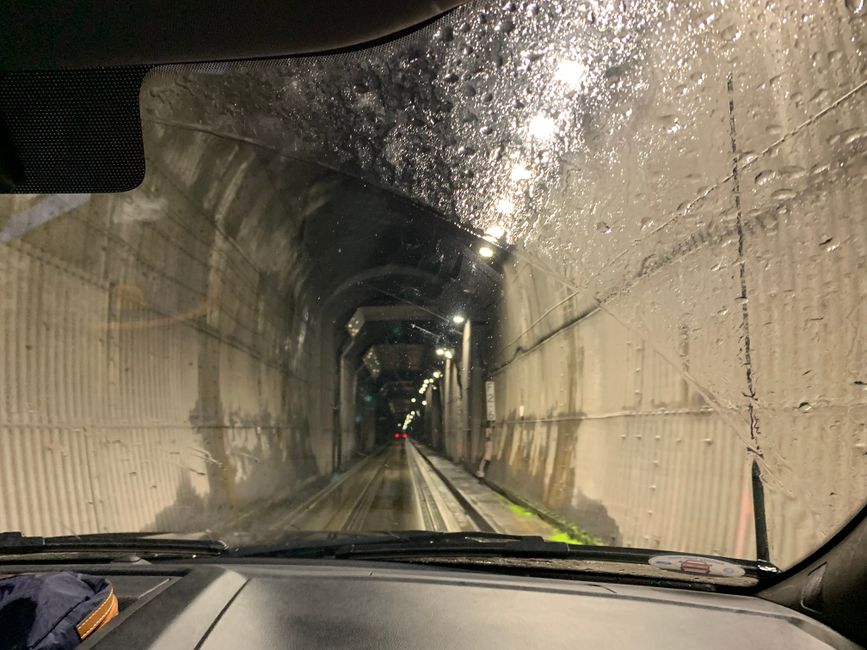
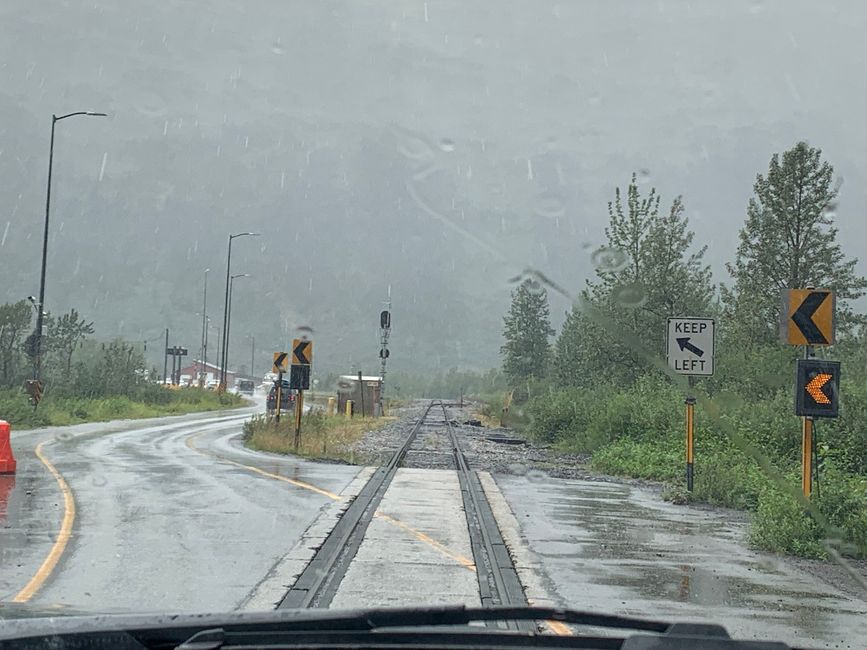
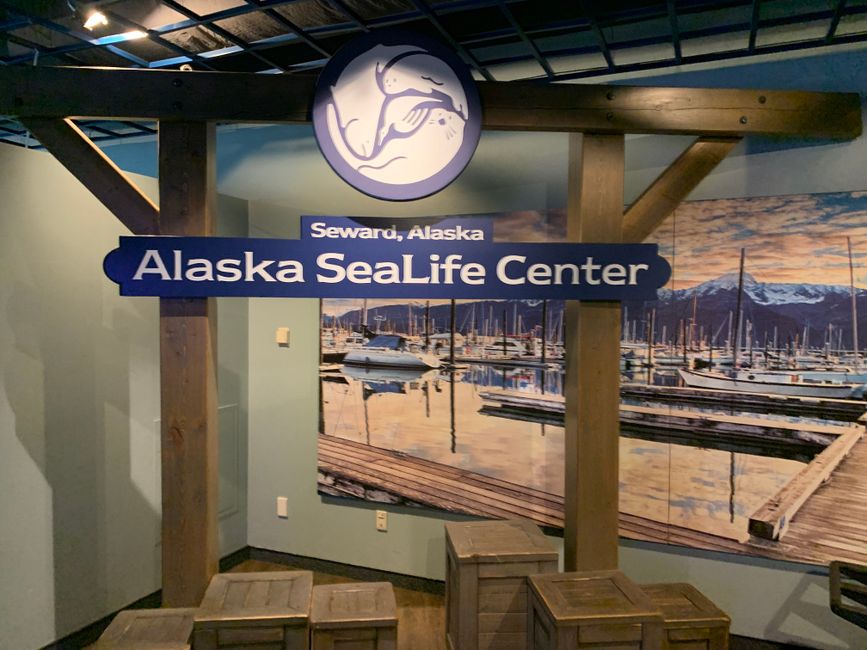
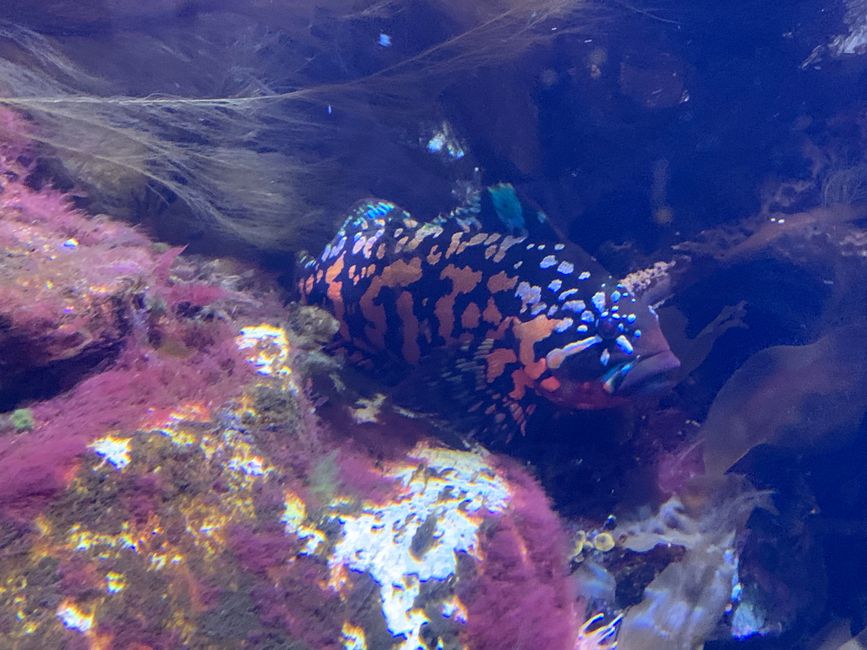
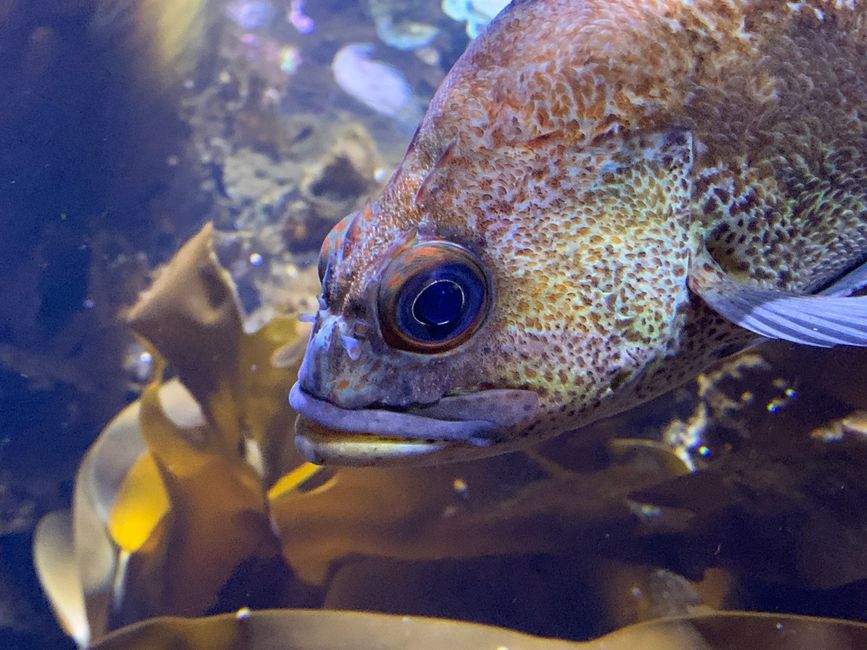

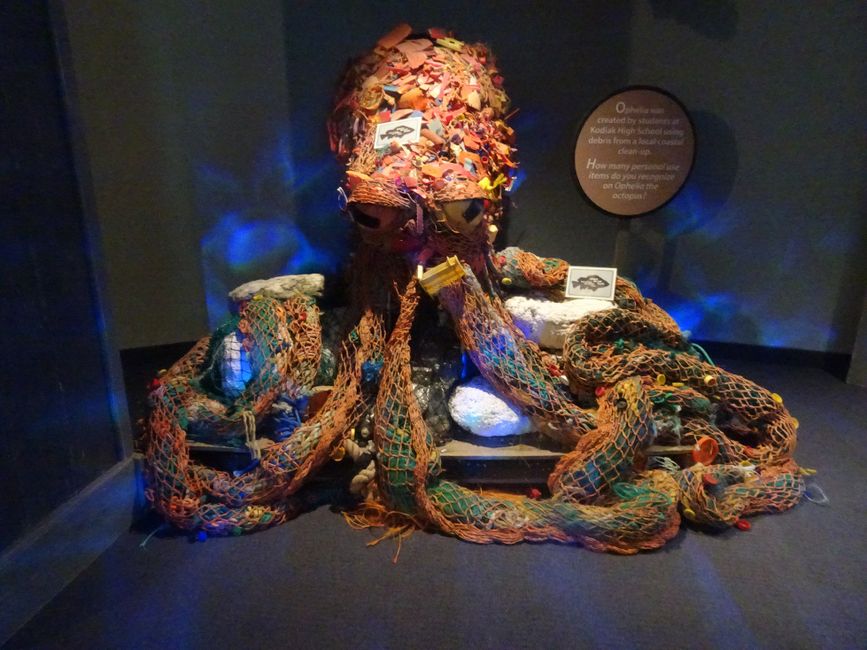

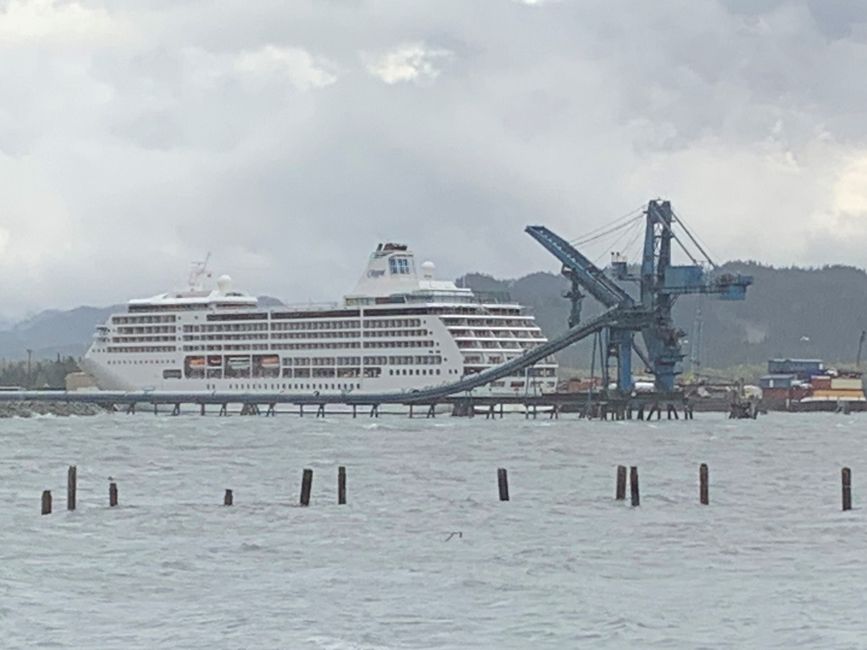
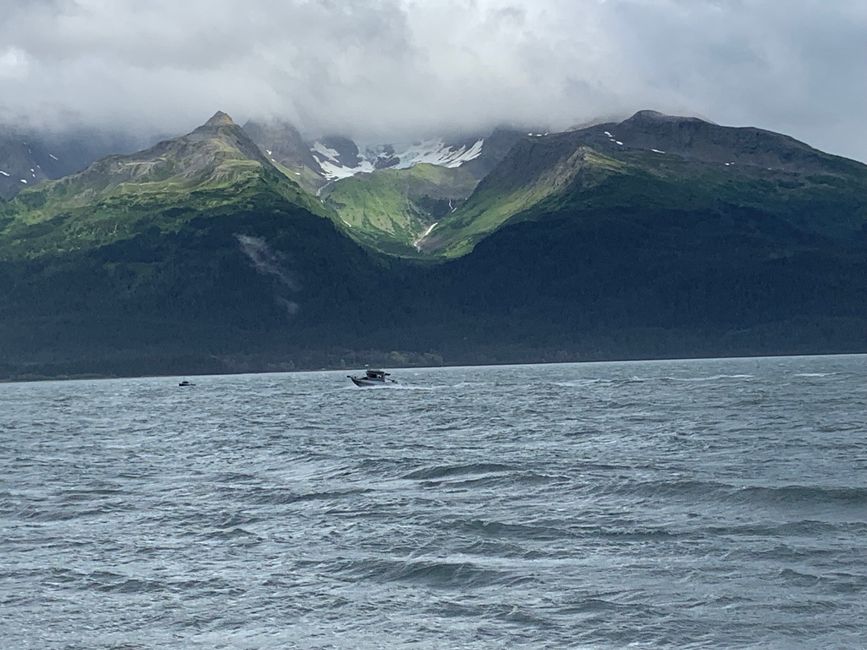
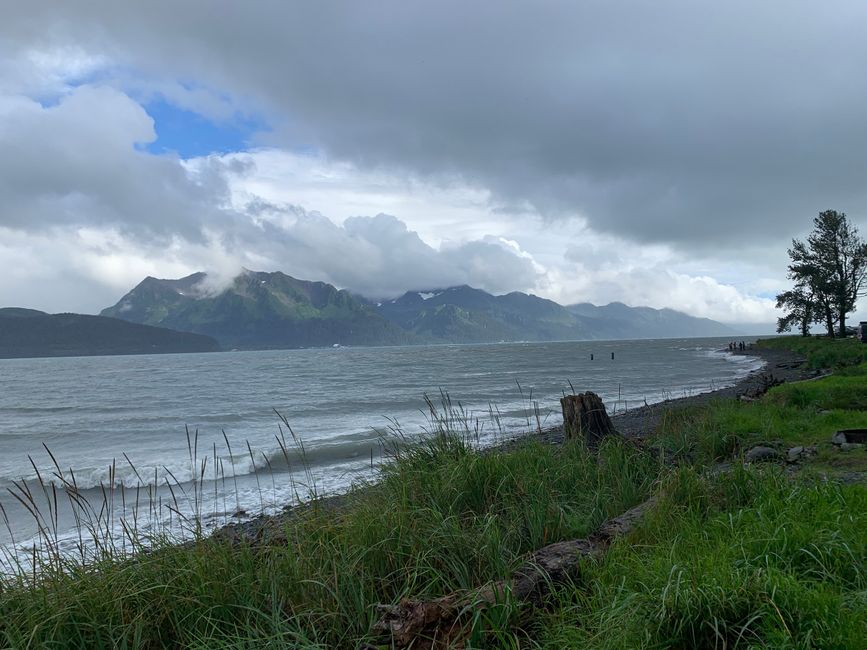
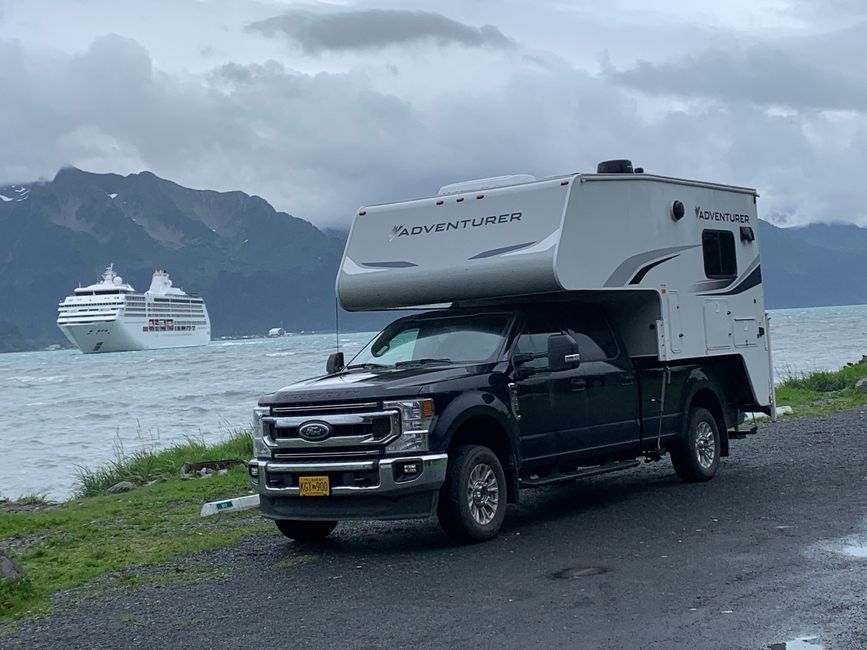
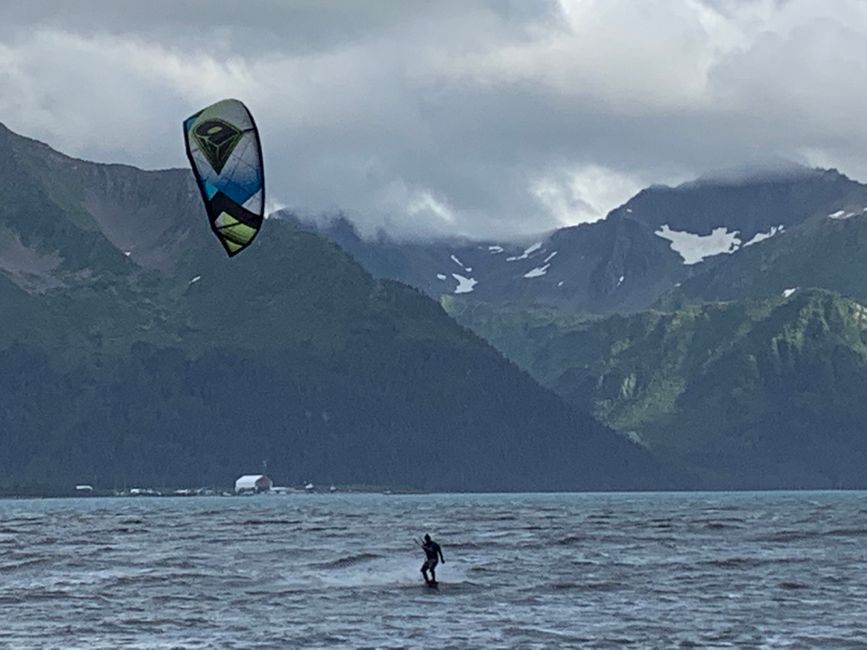
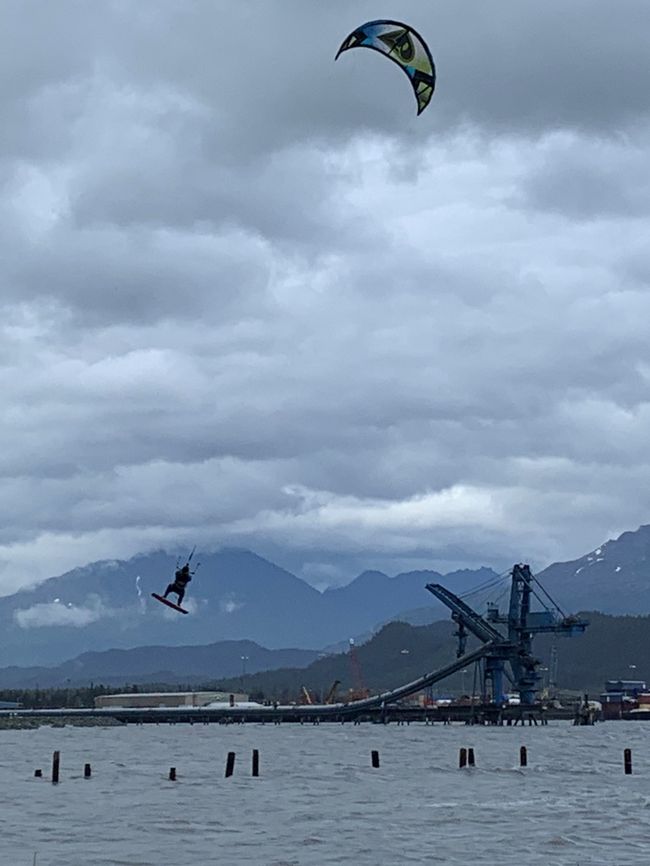
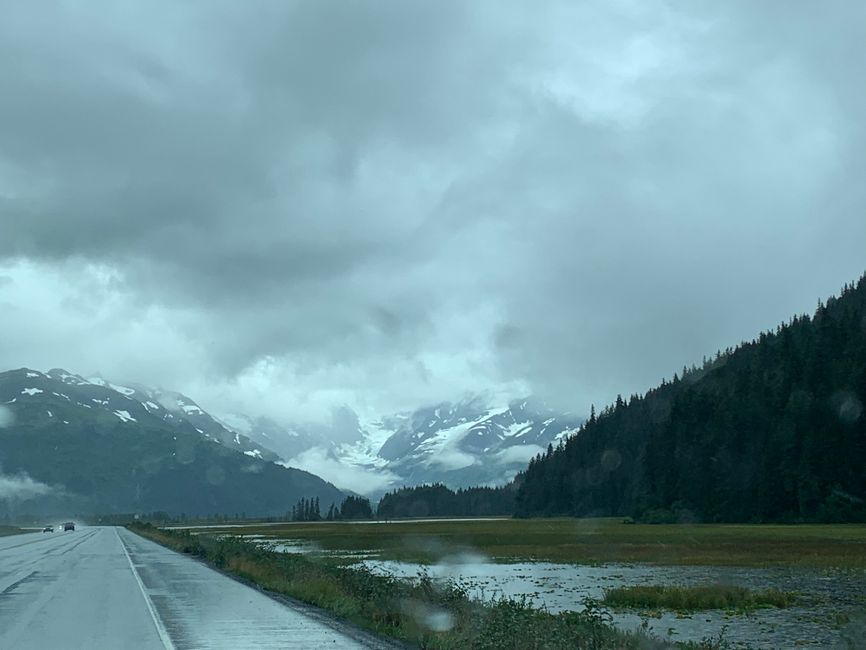
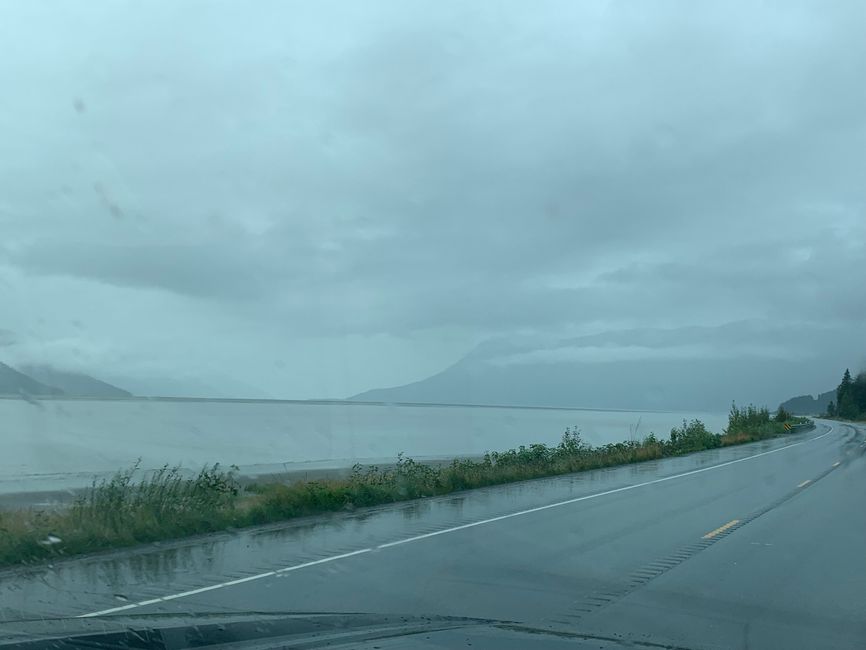
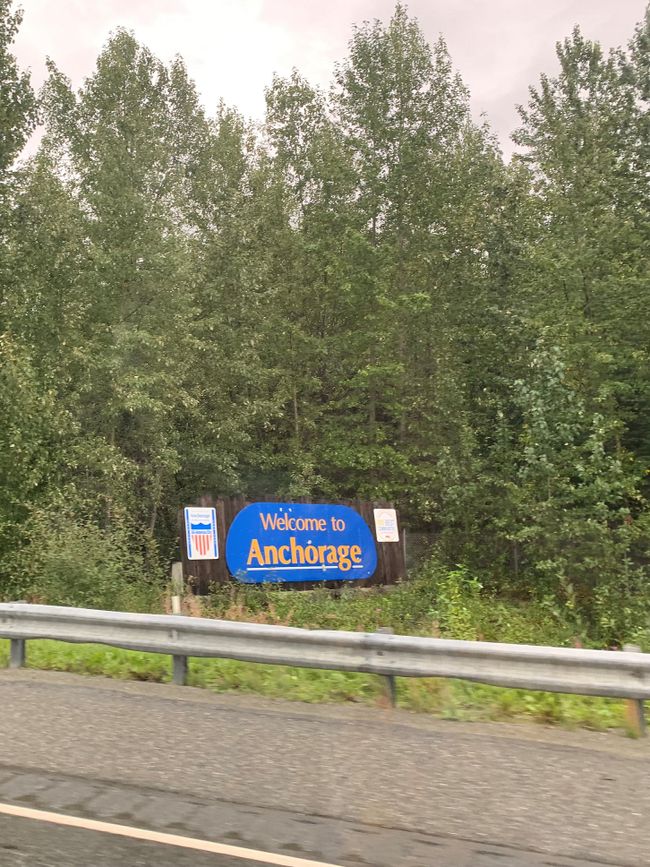
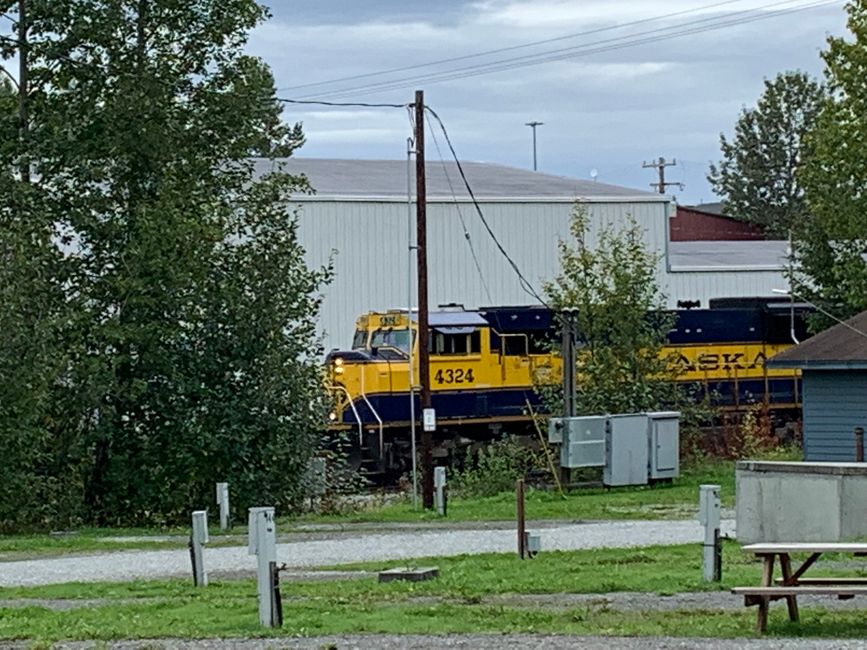
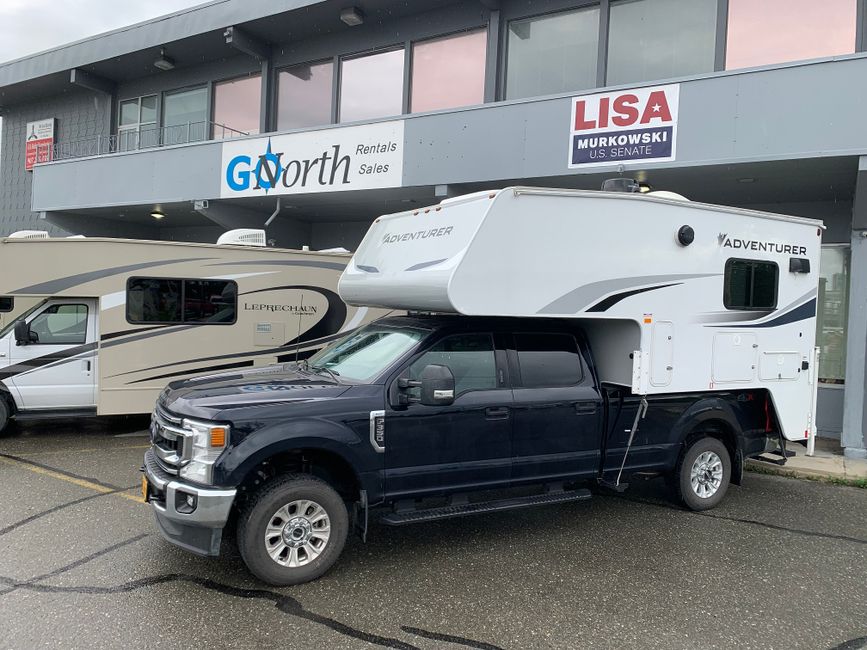
Newsletter abonnieren
Nachdem schon Valdez ziemlich verregnet war, bleibt uns das nasse Wetter treu.
Zunächst geht es mit der Fähre der „Alaska Marine Highway“ durch den Prince William Sound nach Whittier, einem kleinem Ort, der ursprünglich als Militärsiedlung entstanden ist , der gesamte Ort mit seiner Infrastruktur war in zwei Hochhauskomplexen konzentriert, von denen das Buckner Building 1966 verlassen wurde und seither verfällt, wogegen der neuere Begich Tower renoviert wurde und bis heute den Großteil der heute 255 Einwohner von Whittier samt Infrastruktur beherbergt, daher auch der Spitzname „City under one roof“.
Eine weitere Kuriosität von Whittier ist der etwa 4 km lange Anton-Anderson-Tunnel, durch den die einzige Zufahrtsstraße führt. Ursprünglich 1943 gleichzeitig mit dem Buckner Building als reiner, einspuriger Eisenbahntunnel gebaut, wurde er in 2000 für den kombinierten Eisenbahn- und Straßenverkehr umgebaut. Die Züge haben immer Vorrang und für die Autos gibt es eine Ampelregelung. Bei der Durchfahrt, die sich durchaus seltsam anfühlt, hofft man immer, dass das näherkommende Licht das Tunnelende und nicht ein entgegenkommender Zug ist.
Unser Programm für Seward müssen wir wetterbedingt reduzieren, die geplante Schifffahrt zu den Gletschern des Kenai Fjord National Parks streichen wir, der Besuch des absolut sehenswerten Alaska Sealife Center bringt uns ins Trockene. Über die Wettersituation kann uns der an sich sehr schöne Campingstandplatz direkt am Meer auch nicht wirklich hinwegtrösten, immerhin können wir aus unsrem kleinen, gemütlichen „Schneckenhaus“ aus dem Trockenen und Warmen Kreuzfahrtschiffe und „eiserne“ Kite Surfer bewundern.
Auch die abschließende Fahrt Richtung Anchorage lässt uns nur wenige Ausblicke auf die schöne Landschaft zu, der Portage Glacier und der Turnagain Meeresarm zeigen sich nur wolken- und nebelverhangen. In Anchorage räumen wir auf einem Stadtcampingplatz wieder unsere Koffer ein – begleitet von auch nächtlichen, durchaus häufigen heftig lauten Hornsignalen der Alaska Railroad, die direkt am Platz vorbeiführt.
Am nächsten Tag endet mit der Rückgabe unseres Truck Campers beim Verleiher „GoNorth“ zunächst unsere Fahrt über fast 7000 km von Seattle nach Anchorage, jedoch noch nicht unsere Reise „North to Alaska“ – die Grizzlybären auf Kodiak Island warten noch auf uns.
After Valdez had already been quite rainy, the wet weather stayed with us.
First, the "Alaska Marine Highway" ferry takes us through the Prince William Sound to Whittier, a small town that originally was built as a military settlement. The entire town and its infrastructure were concentrated in two high-rise complexes, the Buckner Building being abandoned in 1966 and has since fallen into disrepair, while the newer Begich Tower has been refurbished and is still home to the majority of today’s Whittier's 255 residents and infrastructure, hence the nickname "City under one roof".
Another curiosity of Whittier is the approximately 4 km long Anton Anderson Tunnel, through which the only access road runs. Originally built in 1943 at the same time as the Buckner Building as a pure, single track rail tunnel, it was converted in 2000 for combined rail and road traffic. Trains always have priority and there are traffic lights for cars. When driving through, which feels quite odd, one always hopes that the approaching light is the end of the tunnel and not an oncoming train.
We have to reduce our program for Seward due to the weather, we cancel the planned boat trip to the glaciers of the Kenai Fjord National Park, the visit to the Alaska Sealife Center, which is absolutely worth seeing, keeps us dry. The actually very nice campsite right by the sea cannot really console us about the weather situation, after all we can admire cruise ships and “iron” kite surfers from our small, cozy “snail shell” from the dry and warm.
The final drive towards Anchorage allows us only a few views of the beautiful landscape, the Portage Glacier and the Turnagain Inlet are covered in clouds and fog. In Anchorage we pack our suitcases on a city campsite – accompanied by loud horn signals from the Alaska Railroad, which also runs quite frequently at night and passes right by the site.
The next day, with returning our truck camper to "GoNorth" RV rental company, our journey of almost 7000 km from Seattle to Anchorage ends, but not our "North to Alaska" journey - the grizzly bears on Kodiak Island are still waiting for us.
Newsletter abonnieren
Antworten
